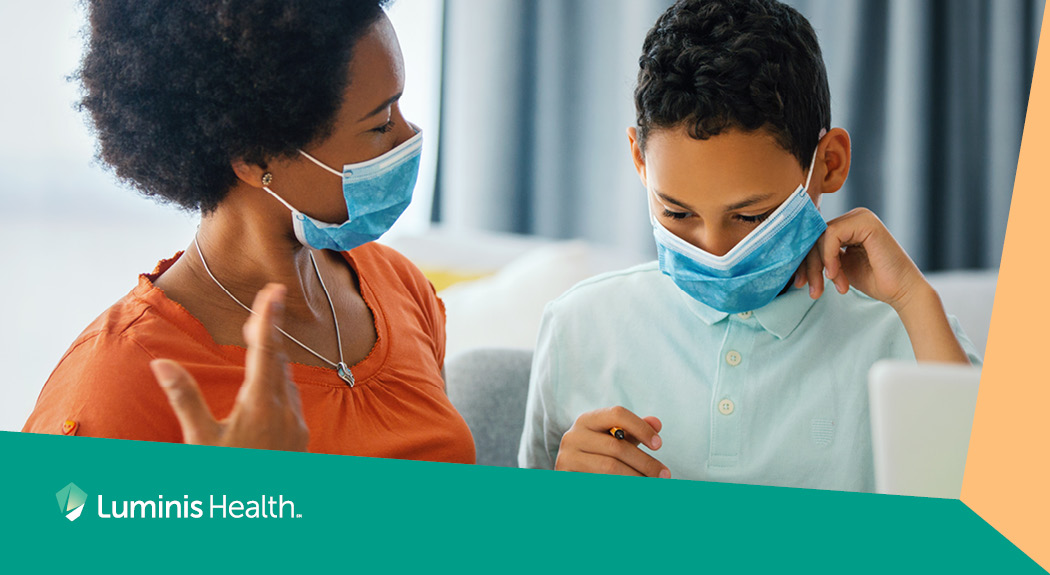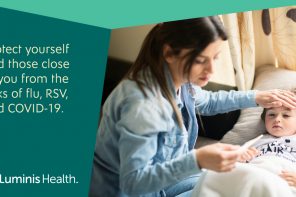Wearing a mask is becoming optional for students in many parts of the country. Recently, Maryland lifted its statewide mask mandate for schools. This comes on the heels of the Centers for Disease Control and Prevention (CDC) easing mask recommendations under a new protocol to monitor COVID-19 and parents may be looking for ways to talk to their child or teen to help manage masking expectations. The new guidelines classify the country into low, medium and high levels of disease to provide individuals with an understanding of what precautions they should consider based on the level of disease in their community, their underlying risk, and their own risk tolerance.
With most children ages 5 and older now able to get COVID vaccines, students have more protection from the virus than they had when the school year began. And because new COVID-19 cases and virus-related hospitalizations have fallen significantly following the Omicron surge, school districts are providing new guidance for masking that may leave some kids and teenagers uncomfortable, while others may be jumping for joy.
Still, the risks COVID poses haven’t been eliminated. And for some people those risks are higher than others. When it comes to masking, it’s up to you to decide what’s best for your family based on your circumstances. Help your children understand the reasons behind your decision and emphasize the importance of respecting each family’s decision. It’s an important conversation — and that’s why we are weighing in with some helpful tips.
When you want your child or teen to continue masking up
In general, COVID-19 is milder in children and teens than adults. However, certain medical issues, including diabetes, obesity and cancer may put kids at risk for more severe COVID disease. If your child has any of these conditions — or if someone in your household is at risk and your child could bring COVID home to them — you may, understandably, want your child to continue to wear a mask.
Some parents have expressed concerns about how their children may be treated if they continue masking when most students go mask-free. And let’s be honest: Children can be cruel. It’s not unusual for kids to bully those who make different choices. And many times, kids feel pressured to conform. It’s important to remember that the COVID pandemic has been traumatic to everyone, and kindness is necessary for all of our healing.
A heartfelt conversation with your child or teen may make things easier. Here are some tips:
- In an age-appropriate way, explain why wearing a mask is important and how it can help protect them and others. But try not to cause them to worry. Just help them understand why masking up is the right thing to do.
- Invite your child or teen to talk with you about their concerns or fears about continuing to wear a mask. Try to be understanding and to offer guidance on how to respond if your kids feel peer pressure.
- Make it clear that you’re trying to do what’s best for everyone in your family, just as other parents are trying to do what’s best for theirs — even if their choices are different.
- Remind your child or teen to tell someone if they feel bullied. And don’t hesitate to take concerns about bullying to school officials. It’s their goal to create an environment where everyone feels comfortable and safe.
- Set a good example. Wear your own mask when you’re in public or around other people.
- When you’re with your child or teen, avoid being critical of others who go without masks.
When you allow your child to go mask-free
If you decide it’s OK for your child or high schooler to attend school without a mask, all the same principles should apply to the conversation, including:
- Advising your child to be respectful of others who continue to wear masks. Explain that while you may feel it’s best for your child to go mask-free, other children have good reasons for masking — and no one should make them feel bad about it.
- Encouraging your child to stand up for kids if others are bullying them. Tell your child they can help by alerting a trusted adult.
- Remind your child that no one should judge another person because they’re different.
Keep COVID safety in mind
Of course, it’s also important to remember that while masks are now optional, COVID isn’t over. Everyone must continue to be cautious. Along with following CDC guidelines concerning vaccinating your child, it’s important to:
- Avoid letting your child be around others who are sick.
- Be on the lookout for COVID symptoms for at least 10 days if your child has close contact with someone who has COVID-19. If they’re up to date on their vaccine, there’s no need for them to quarantine. But if they’re not, they should stay home for at least five days. They should get tested for COVID at least five days after their contact even if they don’t have symptoms.
- Keep your child home from school and away from others if they develop COVID symptoms. Try to get them tested right way. And make sure they wear a mask around others in your home.
- Make sure to follow CDC guidelines for caring for someone with COVID if your child is diagnosed with the disease.
By taking precautions, you’ll help keep your child and others safe.
Betina Franceschini, MD, is a pediatric hospitalist at Luminis Health Anne Arundel Medical Center’s Pediatric Emergency Department.




